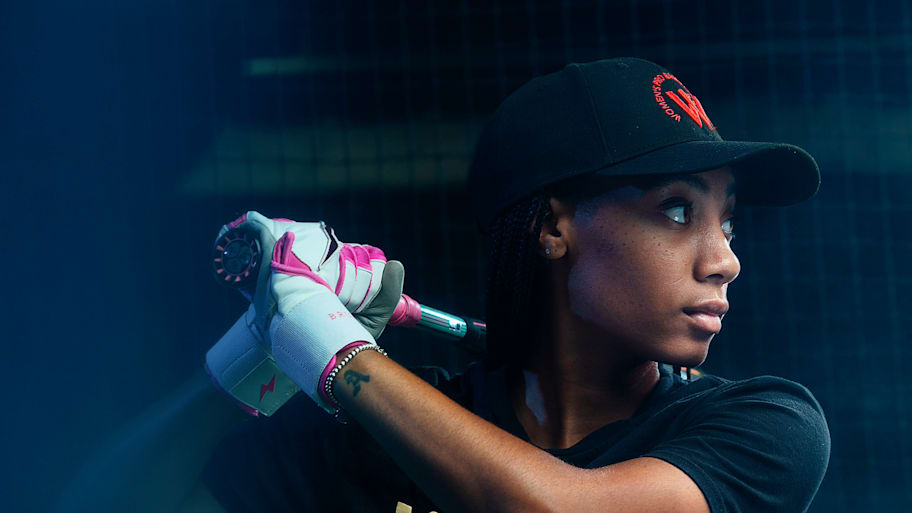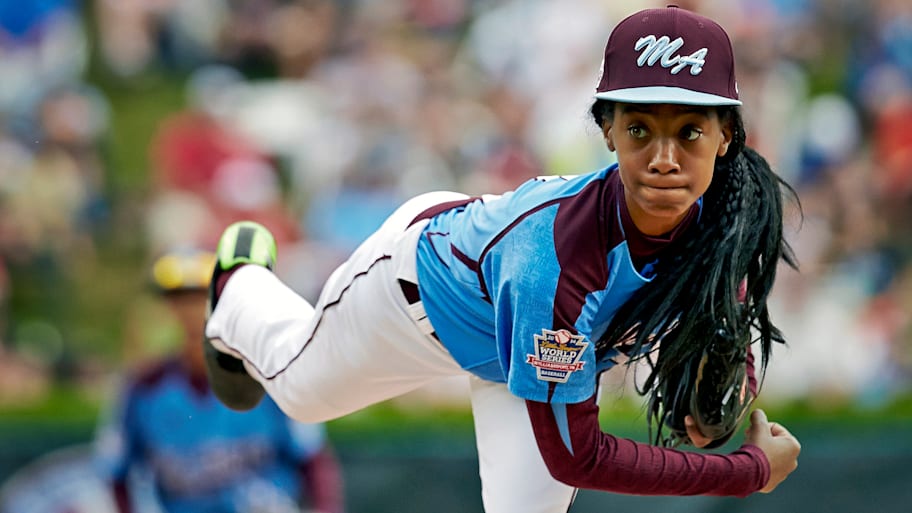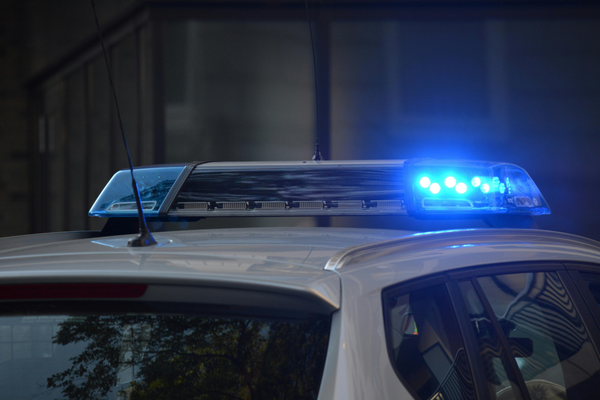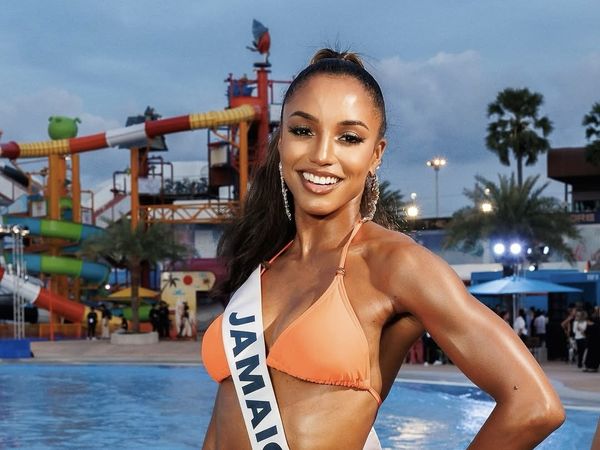
Before Justine Siegal decided anything else about the Women’s Pro Baseball League, she decided that it would announce itself to players with a big, open tryout.
That was about practicality as much as principle. Siegal felt she had to cast a wide net: For every woman already on her radar, each one who had been among the only girls at the Little League World Series or had been invited to play for USA Baseball’s women’s national team, there might be half a dozen others who remained totally unknown. Siegal, 50, understood that dynamic better than anyone. She made her name in men’s baseball—which she has spent her life arguing is not interchangeable with “baseball.” She was the first woman to throw batting practice for a major league team (Cleveland in spring training in 2011) and the first woman hired as a coach for a major league organization (Oakland in the instructional league in ’15). But she feels most strongly about her work around girls and women. She runs a nonprofit, Baseball For All, focused on keeping girls in the game, and she still spends so much time explaining what that means.
Yes, baseball, not softball.

There are plenty of girls who happily play softball. But there have always been some who choose it only because they feel there is no way to play baseball. How many former college softball players had always harbored secret baseball dreams? How many women around the world had spent their lives believing their biggest stage could only ever be a local men’s rec league? Now that she finally had the funding, Siegal wanted to consider all of them. And she did not want to start off telling anyone no before they had even stepped on the field. She knew that most of them had already heard enough of that.
“So many women have been told that they can’t play baseball,” Siegal says. “I didn’t want to be the next person to say, Sorry, this league’s not for you, either.”
Before its August tryouts in Washington, D.C., the WPBL reached out to top players, securing participation from members of the national team and sending personalized invites to other top prospects. Co-founded by Siegal and Canadian businessman Keith Stein, with an advisory board of former players and executives, the league announced its first player signing: Kelsie Whitmore, the pitcher who spent the last few years grinding through a string of “firsts” and “onlys,” playing alongside men in the Atlantic League and with the Savannah Bananas. And it advertised widely to bring in potential others.
Many players never believed something like this would happen. It was the biggest attempt to organize pro baseball for women since the All-American Girls Professional Baseball League in the 1940s and ’50s. The WPBL released plans for a very modest start: It would launch with four teams playing in a neutral location for seven weeks beginning in August 2026. Players would earn a few thousand dollars along with room and board. But these women cared only that it could exist in the first place.
The most famous girl to play the game was now a young woman, a decade removed from becoming the only name that most people know in connection with her gender and her sport, and she had spent years telling people that she was done playing. She had spent years telling herself that she was done playing. But then Mo’ne Davis picked up her phone and scrolled past an Instagram post about a new baseball league. She assumed it had to be fake. That did not matter. She could not stop thinking about it.

Back in 2014, when she was on top of the planet, when she was the first girl to pitch a shutout at the Little League World Series, when she was on the cover of Sports Illustrated and getting recognized everywhere she went and fielding requests from what felt like every corner of the country, Davis heard something that she never forgot.
In the immediate aftermath of that wild run in Williamsport, Pa., her coach told her, “Mo, I don’t want this to be the greatest thing you do in your life. I don’t want you to be 35 years old stuffing yourself in your old Little League jersey and signing at a card show.” She took that message to heart.
That was not his plan when he delivered it to her. “When they’re 13, you feel like they’re not even listening to whatever you say,” Steve Bandura says now. He was stunned when Davis, now 24, recently used that quote in a newspaper interview to describe what had shaped her life after that famous shutout. You remember that? Of course she did. Bandura met Davis back when she was in elementary school and had coached her in multiple sports, and he’d always recognized how smart she was, how good a listener, how thoughtful. Of course she would hold on to something like that.
She was invited to the White House. She published a memoir. She struck out Jimmy Fallon on The Tonight Show, she was the subject of a documentary by Spike Lee, and she had not yet turned 15. She kept thinking about those words from her coach all the while.
Davis continued playing baseball through her teenage years. (She loved her team far too much to leave them.) But she was adamant that she would be done after high school. She did not want to be tied to this forever. A skilled point guard who dreamed of playing at UConn and was congratulated by Huskies coach Geno Auriemma after the LLWS, she focused on basketball at first, and then pivoted to softball, making the same calculation that so many female baseball players do when faced with the value of a college scholarship.
She played for Hampton University in Virginia, and there was plenty that she enjoyed about the experience. Davis loved being at an HBCU. She appreciated her teammates. She liked not being the only girl on the field. But it did not take long to realize what she had known from the beginning: She did not really love softball. It was a fine sport, but it was not her sport, and that only felt more obvious with each passing game. The most famous Little League pitcher of her generation had needed to become an infielder to make the switch between sports. Davis missed being on the mound—the strategy, the adjustments, the feel of the ball in her hand. “She’s such a cerebral player,” Bandura says. She missed how she had been able to use that mental skill in baseball.
When she lost a season due to the pandemic, Davis didn’t bother to take an extra year of eligibility. She decided that she had played enough softball after two seasons at Hampton, finishing with 24 RBIs and 47 hits in 68 career games. That meant charting the next chapter of her life. Davis earned her degree in communications and enrolled in a master’s program in sports management at Columbia. She liked the idea of building a career around professional athletics. But she realized when she graduated that she did not know exactly how that should look.
“She has a lot of options and a lot of talents,” says Bandura, who is still the program director for the Anderson Monarchs youth sports teams, in addition to working for the Philadelphia Department of Parks & Recreation. “She just wasn’t sure which direction she wanted to go in.”
Davis had speaking opportunities and public appearances and invitations to sit on committees. But she was mindful of what her coach had told her all those years ago. She did not want to be forever pulled back into her past. She just did not know how to start defining her future, which is what she was wrestling with when she came across the news about the WPBL.

She did not mention the league to anyone initially. But she did enough research to learn that it was real. Davis saw that Siegal was one of the founders and that Whitmore had signed on. She kept thinking about it. Then she got a call from Bandura.
Did you see this? You should do it, he told her.
“I felt like I was kind of washed,” Davis says. “Like I didn’t have anything left.”
C’mon, Bandura told her. You’re 24.
He thought about a recent conversation he had with another one of his former players. That young man was also fresh out of college, unsure about what should come next, weighing the idea of playing Independent League ball against the need to get a job, make some money, start going to an office every day. “You’ve got another 45 years to do that,” Bandura told him. “You’re going to look back and wish you had played.” He felt the same was true for Davis—except, of course, for all the ways in which it was so clearly not. Everything had always been a little different for her.
She hadn’t played baseball in almost six years. Davis had thrown out ceremonial first pitches, and she had appeared in the alumni game at the Baseball Hall of Fame in Cooperstown in 2024, but she hadn’t played.
In college, she’d spent a summer interning in video production for the Dodgers, and even those long days at the park had not been enough to make her think about picking up a ball. She had been so firm about being done that she did not know how to start again. But she didn’t have to worry about that, Bandura told her. She just had to meet him at the field.
They had been meeting there nearly her entire life. Bandura started to help coach Davis when she was 7 in basketball, soccer and baseball, all with the boys, at Marian Anderson Recreation Center in Philadelphia. They’d become like family to one another. How many evenings had he thrown her batting practice over the years? How many hours had they logged at this same field? They started meeting there again.
“It was typical Mo’ne,” says Bandura. “The first five pitches I threw her were all line drives.”
What she had been more concerned about was her pitching. But the fastball was still there. She needed to regain the feel on her curve, but that showed promise soon enough, too. They did that first workout together in July—less than two months before the tryouts for the WPBL. And her coach was encouraged by what he saw. Davis was not chasing her own ghost. She was just playing ball.
“She’s not trying to reach back for some long-lost glory,” Bandura says. “She enjoys the game.”
She began thinking about how convinced she had been that she needed to leave the sport. “There’s so many interviews out there of me saying, No, I don’t want to play baseball, I don’t want to play baseball,” says Davis. Maybe it wasn’t that she didn’t want to play. Maybe it was that she’d never imagined a way that she actually could. This league was small and new, with no guarantees, but it was enough to give her a way to imagine.
She asked her agent for his thoughts. (“No brainer,” Clinton Reyes says. “If you don’t try out, you’re always going to wonder, What if? The passion wasn’t really always there for those other things. Baseball is where it always has been.”) And then came a call with Siegal. The pair had never talked much previously. But they had been placed in the same context for a long time.
Any discussion of women in baseball nearly always touched on both of them. (They were put on the same NPR panel to discuss the subject in 2018.) Siegal had closely watched Davis’s run at the LLWS: Back then, she’d reached out to Bandura, and she’d met the young player briefly a few times, but she’d always been wary of requesting anything directly from Davis. “I didn’t want to be another adult trying to take from her,” Siegal says. Now, a decade later, they both remembered that as they discussed the new league. What do you want? Siegal asked. She told Davis the WPBL would be happy to have her in any capacity. If she wanted to coach, to broadcast, to be a general league representative—they would take it. This was up to her.
She did not have to think about it. Davis knew. She wanted to play.

After years of being known as the first girl, the only girl, the biggest girl in baseball, Davis rolled up to a field in August with some 600 other women. She would be officially trying out as a center fielder, though she threw a bullpen, too.
The group she was competing with included everyone from teenagers up to women in their 50s. They came from 10 countries, including Japan, Australia, Mexico, Taiwan and South Korea, and from all over the United States. Some had played with or against each other for years. Others walked into the ballpark as strangers to everyone there. All had lived very different baseball lives that happened to be tied by one common thread. They shared that over four days of drills and simulation games, with scouts and executive leadership watching, all for the chance to enter the league’s pool of eligible prospects. The inaugural WPBL draft is scheduled for November 20.
Siegal briefly took refuge from the heat one afternoon in a conference room overlooking the field. She had points to make about finances, quality of play and the developing talent pipeline. She turned for a moment to something else.
“As much as I think baseball is the greatest game on earth,” she says slowly, “it’s been a driving force in a lot of pain in my life.”
She happened to share that with many of the players below. Being the first girl or the only woman is a lonely exercise. None of the players in that situation had sought it out. Their goal was not to play with boys or men. Their goal was to play baseball. Siegal has seen that desire both in players who force themselves to leave the game and in players who do anything they can to stay. She has recognized it in both Davis and Whitmore. She has watched younger players carry less and less of that loneliness as teams and tournaments for girls have become more common over the years. But she knows they all still carry some of it.
Davis and Whitmore each had given so many interviews over the years as the first or the only. They were always positioned as singular figures, anomalies, unconnected from any other girl who might have ever played the game. But after the last day of tryouts, they sat before the cameras and microphones together, right next to Siegal.
Whitmore discussed her pitch mix and then shared one moment that she kept turning over in her mind. A group of players had grabbed dinner together after the first day of tryouts, and when they piled into the car, Whitmore had joked, “Girls’ night out.” But heart cracked open as soon as the words left her mouth. She thought of all her other first days on new teams in new leagues—always known as the girl, the only one, in a way that she could not out-run or out-hit or out-throw. “The isolation has always been real,” Whitmore says. And here she was making a joke, girls, plural. She could hardly believe the freedom. There were no big contracts or long-term plans or even any team names yet. But the league had already given them something they had scarcely been able to dream of before.
That registered just as much for Davis. She had never played baseball with girls or women before. This was new, and yet it was so familiar, too.
“I felt right at home.”
More Baseball on Sports Illustrated
This article was originally published on www.si.com as Mo’ne Davis Is Finally Ready to Play Baseball Again.







